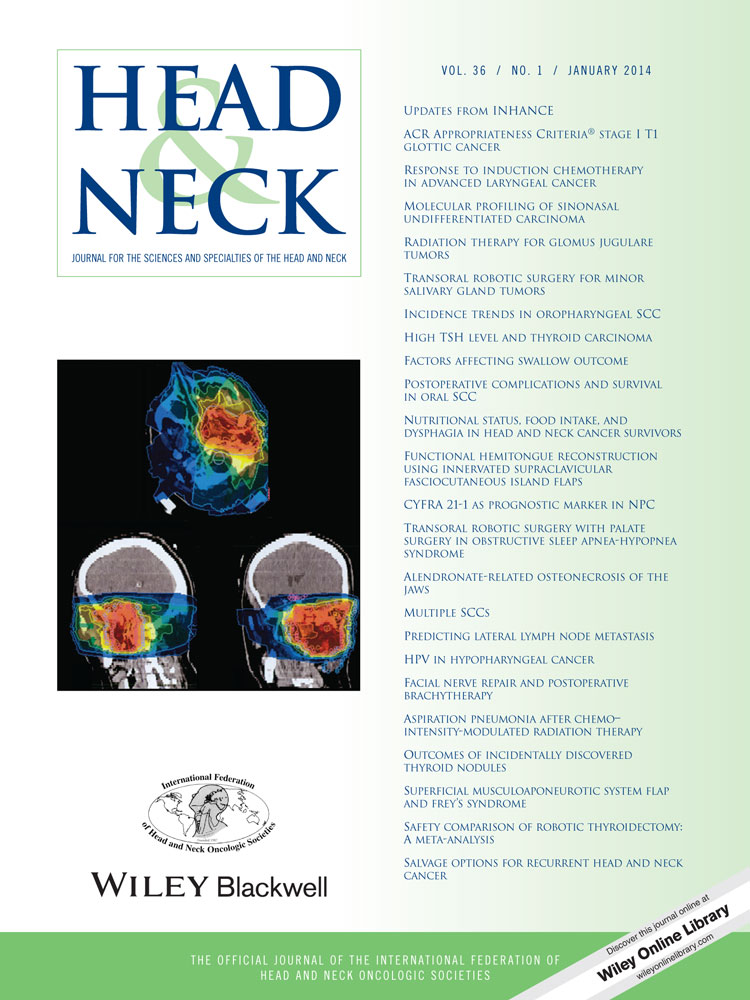Aspiration pneumonia after chemo–intensity-modulated radiation therapy of oropharyngeal carcinoma and its clinical and dysphagia-related predictors
This work was presented in part at the 8th International Conference on Head and Neck Cancer, Toronto, Canada, July 21–25, 2012.
Abstract
Background
The purpose of this study was to assess aspiration pneumonia (AsPn) rates and predictors after chemo-irradiation for head and neck cancer.
Methods
The was a prospective study of 72 patients with stage III to IV oropharyngeal cancer treated definitively with intensity-modulated radiotherapy (IMRT) concurrent with weekly carboplatin and paclitaxel. AsPn was recorded prospectively and dysphagia was evaluated longitudinally through 2 years posttherapy by observer-rated (Common Toxicity Criteria version [CTCAE]) scores, patient-reported scores, and videofluoroscopy.
Results
Sixteen patients (20%) developed AsPn. Predictive factors included T classification (p = .01), aspiration detected on videofluoroscopy (videofluoroscopy-asp; p = .0007), and patient-reported dysphagia (p = .02–.0003), but not observer-rated dysphagia (p = .4). Combining T classification, patient reported dysphagia, and videofluoroscopy-asp, provided the best predictive model.
Conclusion
AsPn continues to be an under-reported consequence of chemo-irradiation for head and neck cancer. These data support using patient-reported dysphagia to identify high-risk patients requiring videofluoroscopy evaluation for preventive measures. Reducing videofluoroscopy-asp rates, by reducing swallowing structures radiation doses and by trials reducing treatment intensity in patients predicted to do well, are likely to reduce AsPn rates. © 2013 Wiley Periodicals, Inc. Head Neck 36: 120–125, 2014




